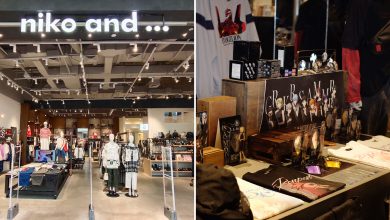Filipino homes with children aged 12 and below contributed to almost three-quarters of total FMCG (Fast Moving Consumer Goods) sales in the country from July 2017 to June 2018. They also gained more significance with the rise of the so-called “junior shoppers” who are influencing the purchasing decisions of families today.
According to Diwa Manila, Account Director at Kantar Worldpanel, around 68% of Filipino homes have kids. This translated to more than 15 million homes that spent Php 36,562 each this year, up by more than Php 1,100 compared to the same period two years ago. Despite not having the purchasing power yet, kids in these homes have the pester power at the moment in terms of the FMCG products for their households. In addition to having higher spending power, the global expert in shoppers’ behavior observed how advancements in technology and the evolving parenting style in the modern age have led to the rise of “junior shoppers” and even “junior influencers,” playing key roles in the promotion and purchasing of new and established brands.
The middle-aged shoppers
Middle-aged housewives or those aged 35 to 54 have accounted for half of the FMCG sales in the Philippines from July 2017 to June 2018. Despite the slight decrease from 52.8% in 2016, this buyer segment contributed 50% or Php 393 billion to the country’s total FMCG sales this year. Health, convenience and hygiene were the top themes prioritized by Filipinos belonging to this segment. Brands that targeted middle-aged shoppers have also been using nostalgia and advocacies to attract and convince them to spend more on their products.
Moreover, Kantar Worldpanel noted the potential for FMCG brands that would normally tap young markets to expand their reach to the midorexia shoppers, a buyer segment composed of the middle-aged and older consumers who appear younger that their actual years.
The golden influencers
The Philippine Commission on Population (POPCOM) revealed that there will be more than 8 million Filipinos over the age of 60 by 2030. Of this group, more than 5 million will be 65 years old and above. The country’s aging population have, thus, registered significant contributions to the FMCG market, with Php 181 billion in sales this year.
In-home cooking remained a trend for the golden influencers, as shown by data from Kantar Worldpanel, with a focus on convenience and easy cooking. This was shown by their purchases of oyster sauce, canned and packed fruits and vegetables, sinigang mix, evaporated milk, tomato sauce, bouillon cubes and fish sauce. It is important to mention that their shopping basket has also showcased an inclination towards healthier food choices like yogurt, nuts and cultured milk.
The health buffs
According to Manila, healthy food and beverage products were experiencing growth in the Philippines this 2018. FMCG sales of categories communicating health-related benefits registered a 5% growth, while Filipinos’ spend for these products per trip increased by 10% based on a compound annual growth rate from 2016 to 2018. Cultured milk, yogurt and soy milk were among the fastest growing categories for Filipino health buffs, data showed.
In addition, being health conscious has transcended into the Filipinos’ view on personal care products. Kantar Worldpanel saw small yet significant growth in purchases of organic products for hair, skin and oral health. Self-care has also highlighted the desire of local consumers to prioritize rest and sleep, as well as to take supplements for various needs.
“The Philippines has a projected population of over 106 million according to the Commission of Population This presents a huge challenge for brands to re-examine and understand the local buyer segments. FMCG brands must be able to stay connected and updated on what Filipino shoppers are looking at and what they are looking for. Creativity is also key to help brands stand out and succeed in the cluttered FMCG market. Lastly, brands must be fast enough to act on the evolving shopping behaviours of Filipinos, especially with the rise of technology and digital influences, in order to grow their market share,” Manila said.
# # #
About Kantar Worldpanel
Kantar Worldpanel is the global expert in shoppers’ behaviour. Through continuous monitoring, advanced analytics and tailored solutions, Kantar Worldpanel inspires successful decisions by brand owners, retailers, market analysts and government organisations globally. With over 60 years’ experience, a team of 3,500, and services covering 60 countries directly or through partners, Kantar Worldpanel turns purchase behaviour into competitive advantage in markets as diverse as FMCG, impulse products, fashion, baby, telecommunications and entertainment, among many others.







